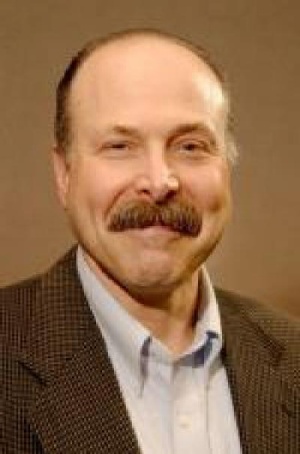Apr 15 2009
In the quest for quantum information processing, diamonds may be a physicist's best friend.
 David Awschalom is a researcher at University of California - Santa Barbara. Credit: Rod Rolle
David Awschalom is a researcher at University of California - Santa Barbara. Credit: Rod Rolle
According to scientists at UC Santa Barbara, diamonds could revolutionize the field of quantum mechanics in computing by leading to ultra-secure communication, lightning-fast database searches, and code-cracking ability.
Two government funding agencies are putting $6.1 million into a pair of research projects aimed at utilizing diamond for quantum communication processing. UCSB is leading the charge on both efforts, due to dramatic developments in quantum physics in the past decade at the university.
"We are extremely excited by the rapid pace of discoveries in this emerging area of science and technology. This vital support offers extraordinary collaborative research opportunities for students to engage at the frontiers of the field in areas spanning fundamental physics to materials science," said David Awschalom, principal investigator for both projects and professor of physics and electrical and computer engineering at UCSB. He also serves as director of UCSB's California NanoSystems Institute (CNSI), and directs UCSB's Center for Spintronics and Quantum Computation.
The funding will go to a research collaboration involving CNSI, Hewlett-Packard Research Labs, and a team of faculty from Lawrence Berkeley National Laboratory, Harvard University, Massachusetts Institute of Technology, the University of Iowa, and the Delft University of Technology. The granting organizations are the Defense Advanced Research Projects Agency (DARPA) and the Air Force Office of Scientific Research (AFOSR).
At the quantum level, things like particles or light waves behave very differently from what scientists expect in a human-scale world. In the quantum world, for example, an electron can exist in two places at the same time, what is called a "superposition" of states; it can "spin up" and "spin down" at the same time.
For many years, scientists at UCSB have tackled the problem of unraveling how the world in which we live emerges from all the interacting quantum particles in matter. This scientific query surrounds the basic quantum dynamics of a single particle spin coupled to a collection, or "bath," of random spins. This scenario describes the underlying behavior of a broad class of materials around us, ranging from quantum spin tunneling in magnetic molecules, to nuclear magnetic resonance in semiconductors.
The current projects will focus on developing new quantum measurement techniques to manipulate and read out single electron spins in diamond. The projects will also focus on the on-chip integration of single electron spins with photonics, for communication. Additionally, the project aims to build a world-class research facility for the creation of synthetic crystal diamond and diamond heterostructure materials and devices. Diamonds fabricated by the team will complement many ongoing research initiatives on campus and around the world, including programs working towards solid-state lighting, nanoelectronics, and atomic-level storage.
Quantum information processing is an emerging field with the capacity for extremely rapid computation and transmission of secure messages via quantum cryptography. The present limits on these developments depend on highly controlled environments, impeccable fabrication of nanostructures, and extreme accuracy in the simultaneous spin of the quantum objects involved. The CNSI-based research team has developed several experimental techniques that offer potential solutions to real-world implementations of these processes, along with the exploration of many fundamental scientific questions surrounding the quantum measurements of matter. Potential results may lead to vast advances in the field –– including the ability to provide secure quantum communication over intercontinental distances.
CNSI at UCSB provides a multidisciplinary approach to research in order to develop the information, biomedical, and manufacturing technologies that will dominate science and economy in the 21st century.
The UCSB team includes Andrew Cleland, professor of physics; Evelyn Hu, professor of electrical & computer engineering and materials; Steven DenBaars, professor of materials and electrical & computer engineering; Umesh Mishra, professor of electrical & computer engineering; Shuji Nakamura, professor of materials; Christopher Palmstrom, professor of materials and electrical & computer engineering; Susanne Stemmer, professor of materials; and, Chris Van der Walle, professor of materials. Another collaborator is Ronald Hanson, a recent CNSI postdoctoral fellow, who is now a professor at the Kavli Institute on Nanoscience at the Delft University of Technology in the Netherlands.